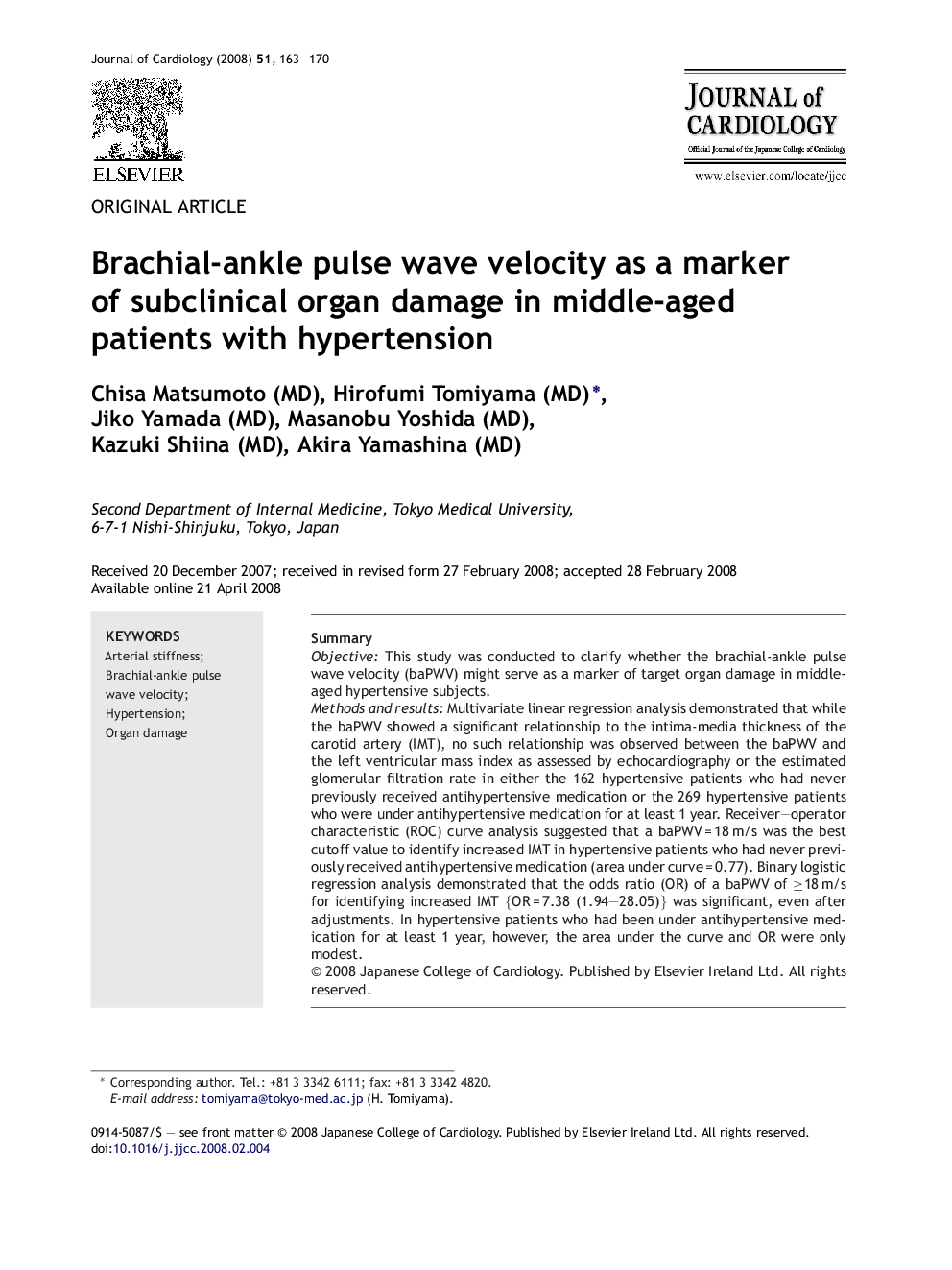| Article ID | Journal | Published Year | Pages | File Type |
|---|---|---|---|---|
| 2963815 | Journal of Cardiology | 2008 | 8 Pages |
SummaryObjectiveThis study was conducted to clarify whether the brachial-ankle pulse wave velocity (baPWV) might serve as a marker of target organ damage in middle-aged hypertensive subjects.Methods and resultsMultivariate linear regression analysis demonstrated that while the baPWV showed a significant relationship to the intima-media thickness of the carotid artery (IMT), no such relationship was observed between the baPWV and the left ventricular mass index as assessed by echocardiography or the estimated glomerular filtration rate in either the 162 hypertensive patients who had never previously received antihypertensive medication or the 269 hypertensive patients who were under antihypertensive medication for at least 1 year. Receiver–operator characteristic (ROC) curve analysis suggested that a baPWV = 18 m/s was the best cutoff value to identify increased IMT in hypertensive patients who had never previously received antihypertensive medication (area under curve = 0.77). Binary logistic regression analysis demonstrated that the odds ratio (OR) of a baPWV of ≥18 m/s for identifying increased IMT {OR = 7.38 (1.94–28.05)} was significant, even after adjustments. In hypertensive patients who had been under antihypertensive medication for at least 1 year, however, the area under the curve and OR were only modest.ConclusionThe baPWV may be a marker of carotid atherosclerosis, rather than of left ventricular hypertrophy or renal insufficiency, especially in middle-aged hypertensive subjects (subjects in their 30s to 60s), not only in those who have never previously received antihypertensive medication, but also in those who are under antihypertensive medication.
